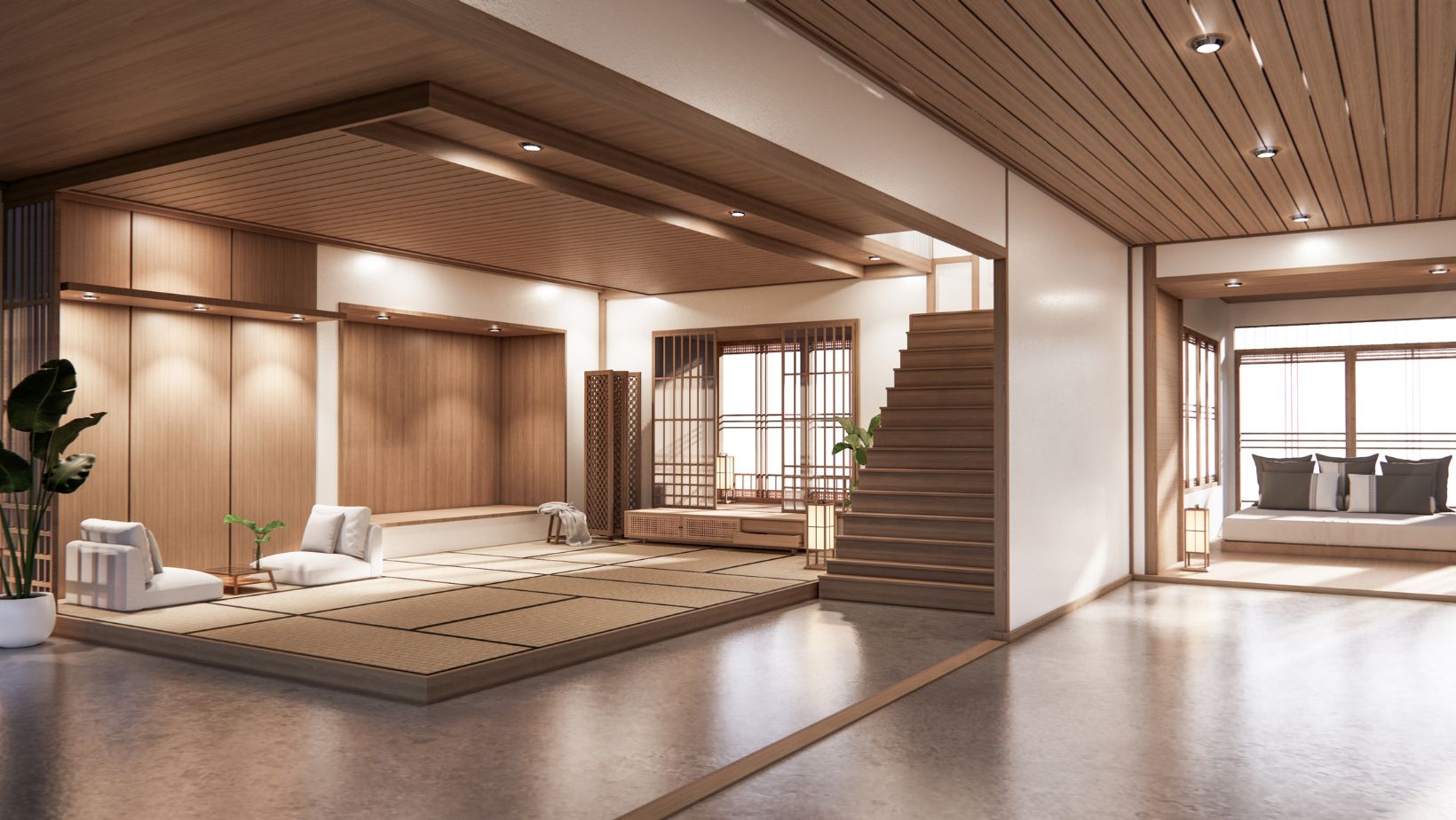In recent years, eco-friendly interior design has transitioned from a niche interest to a mainstream movement, reflecting the growing awareness of our environmental impact. By making sustainable choices in our homes, we not only contribute to the health of our planet, but we also create healthier and more harmonious living spaces.
Sustainable Materials
Bamboo is one of the most sustainable materials available. Unlike traditional wood, which can take decades to mature, bamboo grows rapidly and can reach maturity within three to five years. Its strength and durability make it an excellent choice for flooring, furniture, and even decorative elements. Think about bamboo dining tables and chairs, which add an organic touch to any room. Bamboo’s natural aesthetic adds a warm, earthy tone to any space, making it both a practical and stylish choice.
Wood is a highly sustainable material when sourced responsibly and it has a low carbon footprint. Reclaimed wood, especially, is a great material as it repurposes old timber from sources such as barns, factories and wine barrels. Giving it a new life in a modern home. Think about solid wood flooring and engineered wood flooring along with bookshelves and coffee tables made from reclaimed wood. It adds a unique and rustic charm to interiors, bringing character and history into your home.
Cork is harvested from the bark of cork oak trees and doesn’t cause any harm to the tree itself, making it a renewable resource. It’s naturally resistant to mold, mildew, and pests, plus it provides excellent insulation properties.
Cork is versatile and can be used for flooring, wall coverings, and even furniture. Consider cork wall tiles and flooring. Its soft and cushioned texture makes it especially suitable for areas where comfort is a priority, like bedrooms and living rooms.
Recycled metal can be used for fixtures and furniture, helping reduce the need for virgin metal extraction, which is energy-intensive and environmentally damaging. Recycled metal can be crafted into a variety of stylish items; from industrial-style light fixtures to sleek and modern furniture. Examples could be cabinet handles, light fixtures along with bed frames and chairs. Its durability and recyclability make it a long-lasting, sustainable choice.
Organic textiles such as cotton, wool, and linen are grown without the use of synthetic pesticides and fertilizers. This makes them healthier for the environment and for those who produce and use them. You should look for certifications like GOTS (Global Organic Textile Standard) to ensure that the textiles you choose meet rigorous environmental and social criteria. These materials are ideal for upholstery, bedding, and curtains.
Eco-Friendly Design Practices
Energy Efficiency: One of the most impactful ways to make your home more environmentally friendly is by improving its energy efficiency. This can be achieved through various design choices with your insulation, windows, and lighting. Think about proper insulation in your walls, roofs, and floors to reduce the need for heating and cooling, save energy, and lower your utility bills. Double or triple-glazed windows provide better insulation than single-pane windows. You should consider using energy-efficient window treatments like thermal curtains or shades. Replace incandescent bulbs with LED or CFL bulbs, which use significantly less energy and last longer. You want to incorporate as much natural light as possible, too!
Water Conservation: When you design with water conservation in mind, you can significantly reduce your home’s environmental footprint. Low-flow faucets, showerheads, and toilets can reduce your water usage without sacrificing performance. Greywater systems recycle water from sinks, showers, and laundry for use in irrigation and flushing toilets, which reduces water consumption. You could even collect rainwater to use in gardening and other non-potable applications.
Indoor Air Quality: Given that we spend so much time indoors, it’s important to create a healthy indoor environment. Avoid using traditional paints and finishes, which can emit volatile organic compounds (VOCs), which are harmful to both the environment and human health. You should choose low or zero-VOC options to help improve your air quality.
Additionally, incorporating houseplants into your design not only adds beauty but also helps to purify the air. Plants that are particularly effective at removing toxins include spider plants, snake plants, and peace lilies. You also want proper ventilation to prevent mold and mildew growth. This can be done using exhaust fans, air purifiers, and natural ventilation methods such as opening your windows.
Sustainable Furniture and Décor: By choosing sustainable furniture and décor pieces, you can immediately create a significant impact on your home’s eco-friendliness. Consider buying second-hand or vintage furniture, which reduces the demand for new products and keeps usable items out of landfills. Support brands that prioritize sustainability in their production processes; look for furniture made from reclaimed or responsibly sourced materials, along with brands that use eco-friendly manufacturing practices. Don’t forget you can get creative by upcycling old furniture or DIY-ing your décor! This not only saves you money, but it also allows you to create unique and personalized pieces.
Minimalism and Longevity: Adopting a minimalist approach to your interior design can also lead to a more sustainable lifestyle. Invest in high-quality and durable items that will stand the test of time instead of frequently replacing cheaper, less durable products. You should choose timeless designs that won’t go out of style quickly, reducing the need to update your décor regularly. Maintaining a clutter-free home is a fantastic way to help you be more mindful about your consumption habits, too.







